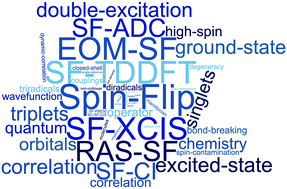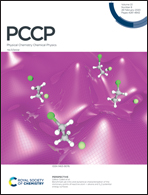Spin-flip methods in quantum chemistry
Abstract
This Perspective discusses salient features of the spin-flip approach to strong correlation and describes different methods that sprung from this idea. The spin-flip treatment exploits the different physics of low-spin and high-spin states and is based on the observation that correlation is small for same-spin electrons. By using a well-behaved high-spin state as a reference, one can access problematic low-spin states by deploying the same formal tools as in the excited-state treatments (i.e., linear response, propagator, or equation-of-motion theories). The Perspective reviews applications of this strategy within wave function and density functional theory frameworks as well as the extensions for molecular properties and spectroscopy. The utility of spin-flip methods is illustrated by examples. Limitations and proposed future directions are also discussed.

- This article is part of the themed collections: PCCP Perspectives and 2020 PCCP HOT Articles


 Please wait while we load your content...
Please wait while we load your content...